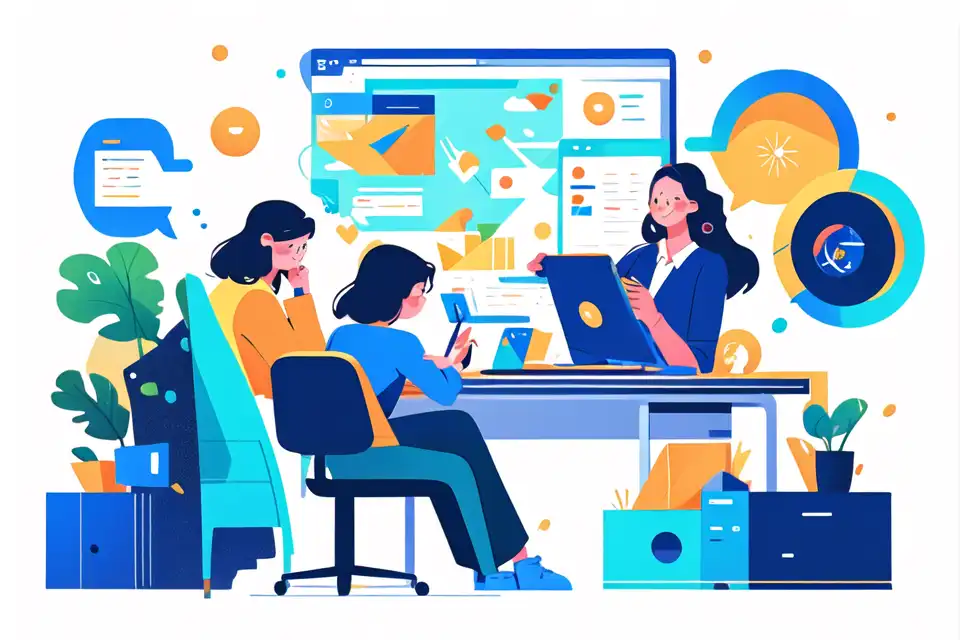Work Package for Design and User Experience Teams
Explore work package for design and user experience teams, ensuring efficiency and successful project management outcomes.
Try Lark for Free
Before delving into the intricacies of work packages for design and user experience teams, it's essential to comprehend the significance of this approach. A well-structured work package can streamline processes, enhance collaboration, and ultimately lead to the delivery of superior design and user experience solutions. By examining the various facets of this concept, teams can unlock their full potential and achieve remarkable results.
Leverage Lark for project management within your team.
Understanding work package
A work package for design and user experience teams encapsulates a set of activities and deliverables aimed at achieving specific objectives within a defined timeline. It serves as a comprehensive roadmap, delineating the tasks to be executed, resources required, and milestones to be met. This structured approach ensures clarity and assists in aligning individual efforts with overarching project goals, fostering a cohesive and harmonized work environment.
Benefits of work package for design and user experience teams
Successful implementation of work packages yields several benefits for design and user experience teams, thereby maximizing their overall performance and impact.
Simplified Task Management
Running on tight deadlines and multiple projects concurrently, design and user experience teams often grapple with task prioritization and allocation. Implementing work packages streamlines this process by breaking down complex projects into manageable tasks, thereby enabling efficient assignment and monitoring.
Enhanced Collaboration
Work packages promote teamwork and collaboration by clearly defining the individual responsibilities of team members. This fosters a sense of accountability, transparency, and collective ownership, leading to a more synchronized and harmonious work environment.
Improved Quality Control
By segmenting projects into distinct work packages, design and user experience teams can effectively focus on the quality of deliverables at every stage. This structured approach facilitates thorough review and validation, ensuring that the final output meets the desired standards.
Steps to implement work package for design and user experience teams
Implementing work packages for design and user experience teams involves a systematic approach. Here's a step-by-step guide to effectively integrate this methodology into your workflow:
Step 1: Define Project Scope and Objectives
Clearly outline the scope and objectives of the project to identify the key deliverables and activities required. This serves as the foundation for structuring the subsequent work packages.
Step 2: Breakdown Tasks and Sub-Tasks
Segment the project into smaller, manageable tasks and sub-tasks, ensuring that each component contributes towards achieving the overarching goals. Assign specific responsibilities to team members based on their expertise and strengths.
Step 3: Establish Timeframes and Milestones
Set realistic timelines and milestones for each work package, aligning them with the project's broader timeline. This enables efficient tracking of progress and ensures timely completion of tasks.
Step 4: Allocate Resources
Identify and allocate the necessary resources, including human resources, tools, and technologies, for executing the work packages. This step is crucial for optimizing efficiency and workflow continuity.
Step 5: Regular Monitoring and Adaptation
Continuously monitor the progress of work packages, making adjustments as necessary to address any emerging challenges or capitalize on new opportunities. This iterative process ensures agility and adaptability throughout the project lifecycle.
Learn more about Lark Project Management for Teams
Common pitfalls and how to avoid them in design and user experience teams
Despite the benefits they offer, work packages can encounter certain pitfalls, which, if left unaddressed, may impede their effectiveness within design and user experience teams. Let's explore these potential challenges and strategies to avoid them:
Pitfall 1: Overly Rigid Structures
Work packages should provide a framework for execution rather than restrict creativity and innovation. Avoid creating excessively rigid structures that stifle the team's flexibility and ingenuity.
Pitfall 2: Inadequate Communication
Effective communication is paramount for the success of work packages. Failing to foster transparent and open communication channels can lead to misunderstandings, delays, and subpar outcomes.
Pitfall 3: Ignoring Feedback Loops
Feedback loops are essential for continuous improvement. Neglecting to incorporate feedback mechanisms within work packages can hinder the team's ability to adapt and refine their processes.
Do's and dont's of implementing work packages
The following table outlines the essential do's and dont's of implementing work packages for design and user experience teams:
| Do's | Dont's |
|---|---|
| Do define clear objectives | Don't overlook resource allocation |
| Do establish realistic timelines | Don't create overly complex work packages |
| Do encourage open communication | Don't ignore feedback and suggestions |
Learn more about Lark Project Management for Teams
Examples of effective work packages
Streamlining ux research processes
Streamlining ux research processes
In a large-scale e-commerce project, the design and user experience team implemented a work package specifically aimed at streamlining UX research processes. This involved breaking down the research phase into distinct tasks, such as user interviews, surveys, and competitive analysis, with a clear timeline and allocated resources for each activity. The structured work package resulted in comprehensive and actionable insights, contributing to the development of an intuitive and user-centric platform.
Agile design sprint implementation
Agile design sprint implementation
A design agency leveraged work packages to execute agile design sprints for a client's mobile app redesign. Through well-defined work packages, the team seamlessly orchestrated activities including ideation sessions, prototyping, and user testing within short, iterative cycles. This approach fostered rapid iteration and collaborative problem-solving, ultimately yielding a highly polished and user-friendly mobile application.
Integrating accessibility standards
Integrating accessibility standards
To ensure inclusivity in digital products, a user experience team incorporated a work package focused on integrating robust accessibility standards into their design processes. By delineating specific tasks related to accessibility audits, design optimization, and user testing, the team achieved a significant enhancement in the usability and accessibility of their products, catering to a broader audience.
Learn more about Lark Project Management for Teams
Leverage Lark for project management within your team.








